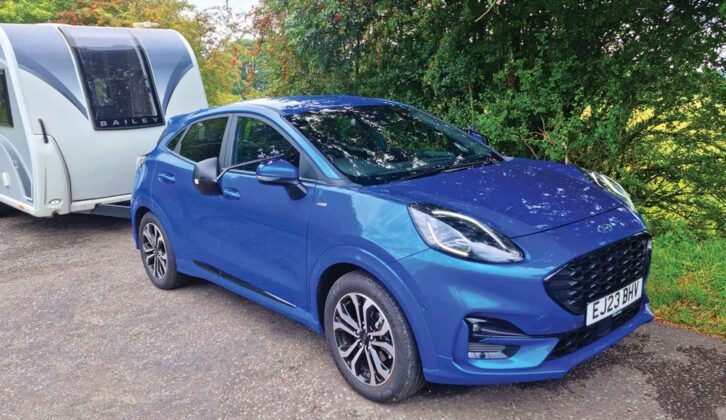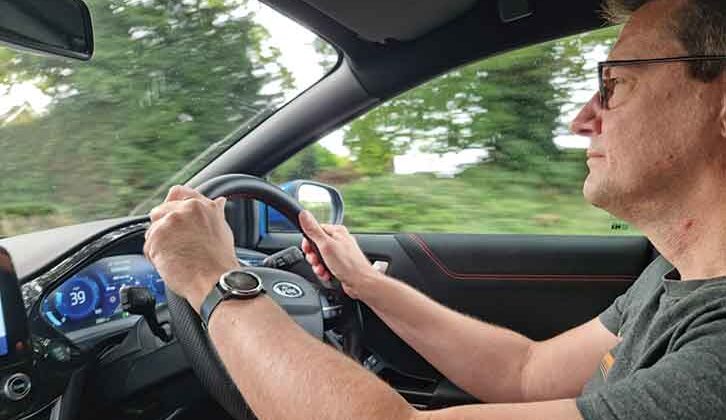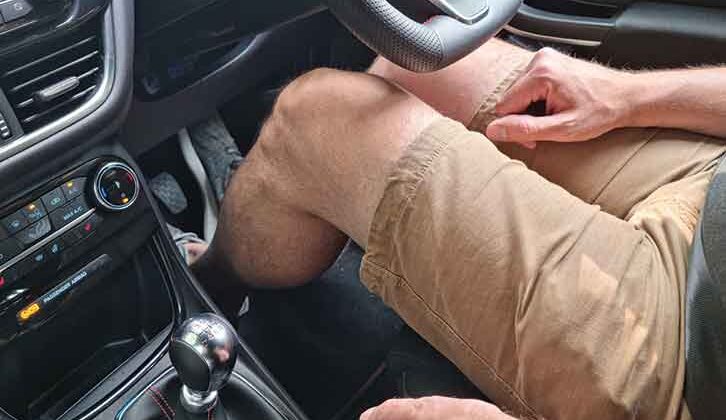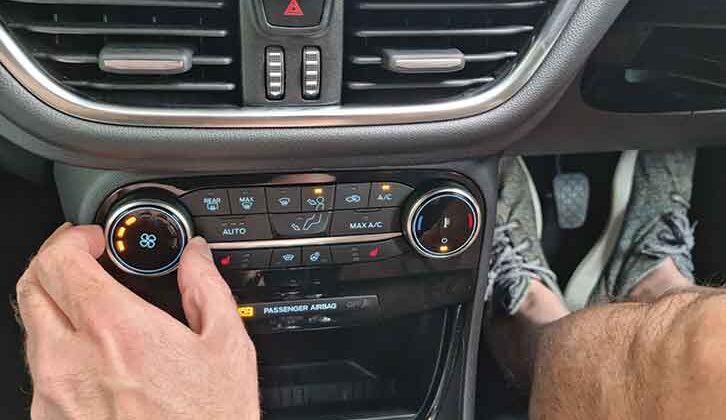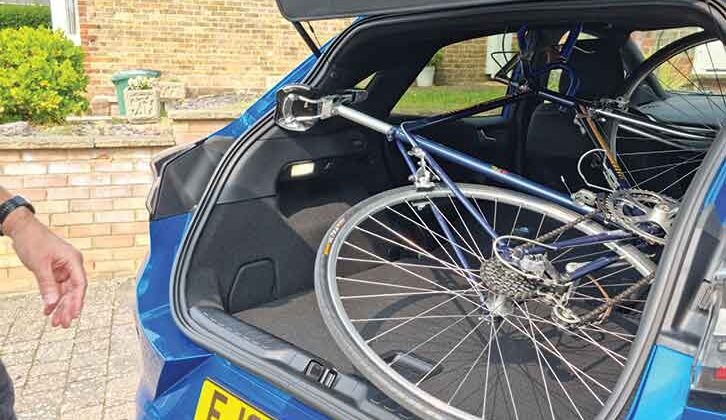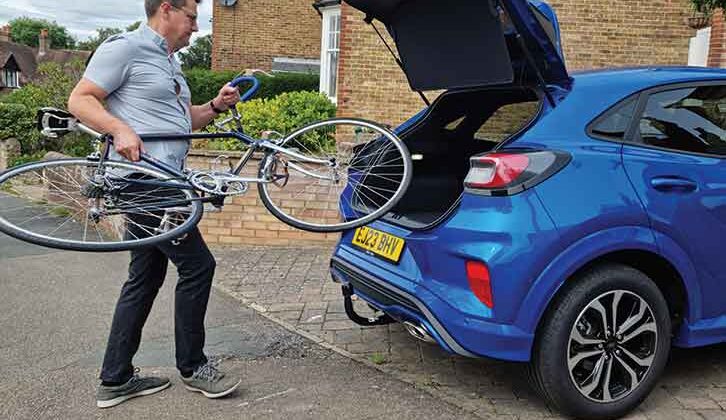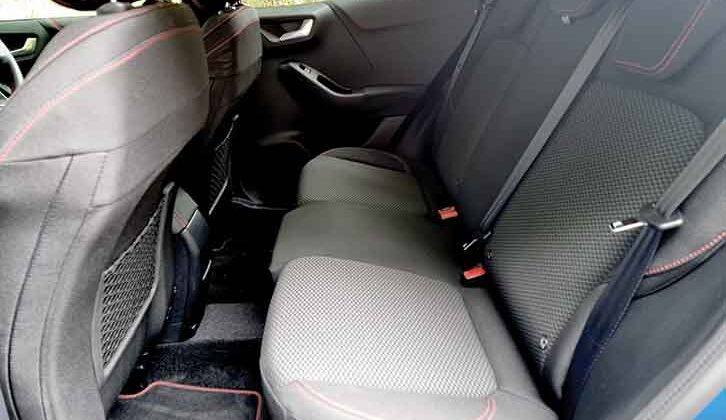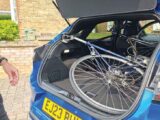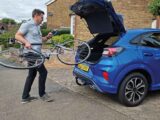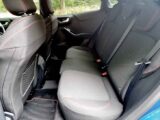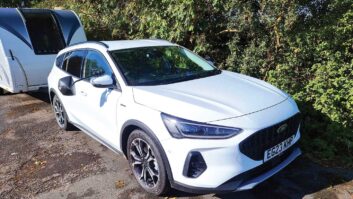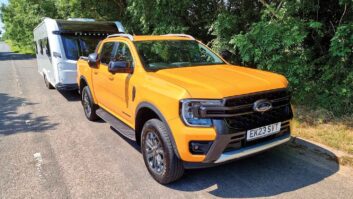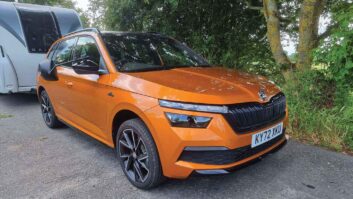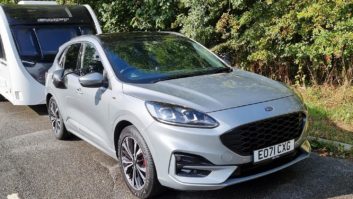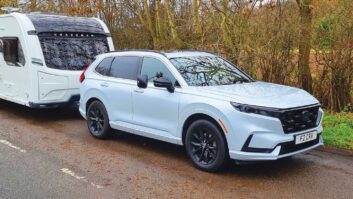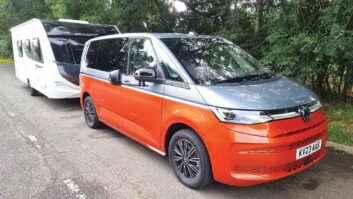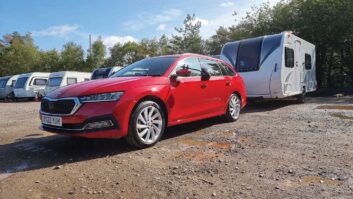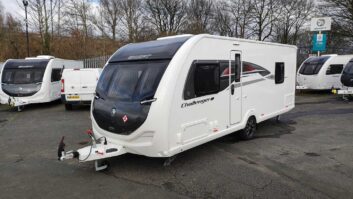The motoring world is changing very fast. As recently as 2020, the Ford Fiesta was Britain’s best-selling new car. Now it’s no longer being made, a victim of rising costs and the move from fossil fuels to electricity.
You may no longer be able to buy a new Fiesta, but the Ford Puma is about as close as you can get. It shares many parts with the Fiesta, and it’s now the smallest new car that Ford sells. Despite its size and low weight, you can tow with one.
The best cars for towing caravans will offer stability and reliability so I was interested to see how the Ford Puma 1.0 mHEV 155PS ST-Line would do. As a result, I spent a week with the Puma to get to know more about this lightweight tow car.
Tuesday: receiving the Ford Puma 1.0 mHEV 155PS ST-Line
The Ford Puma arrives bright and early. It’s a sunny day, so Ford’s delivery driver is happy to return by walking to the train station. And as there was nowhere to park other than across my driveway, I have the perfect excuse to go out for a spin.
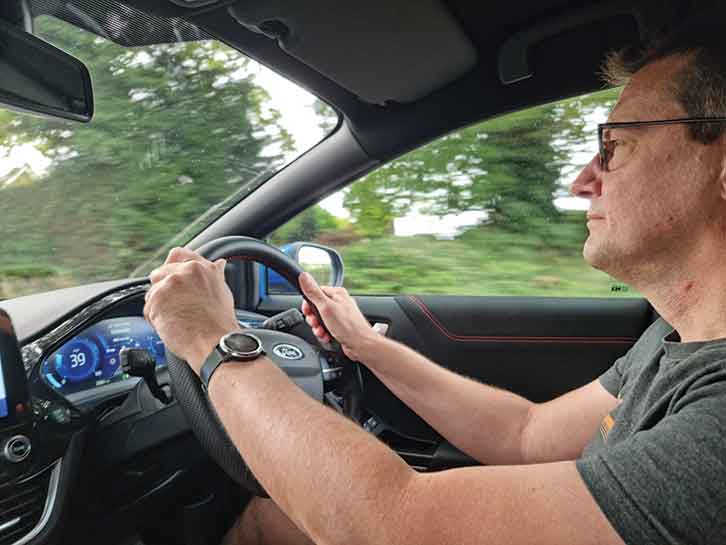
It soon becomes obvious why the Puma is so popular with keen drivers: the Ford is so much fun to drive. The steering is precise, the gearshift slick and the engine wonderfully lively considering its 1.0-litre capacity. You don’t have to travel quickly to enjoy it, because the Puma engages the driver even when you’re driving slowly.
There’s none of the rubbery numbness to the controls that afflicts so many cars.
The downside is the firm ride. You feel the bumps more than you would in a Škoda Kamiq, for example.
Wednesday: towing with the Ford Puma
Time to tow. The Puma is a very light car; with a kerbweight of only 1280kg, it has an 85% match figure of 1088kg, just within the 1100kg maximum towing figure.
It’s a suitable match for our Bailey Discovery D4-4, but only so long as the caravan is fully unloaded and weighs in at the MiRO of 1059kg. Caravan weights are always crucial when it comes to towing, and loading to the caravan’s MTPLM of 1206kg would be going beyond the towing limit.
The Puma’s rear-view camera is a big plus as I’m hitching up on my own (check out our hitching up a caravan guide for more on this). As well as the usual lines showing where the car is heading, there’s also one showing where the towball will end up. This is so handy, you wonder why more manufacturers aren’t doing the same.
As soon as I leave the caravan storage facility, the extra weight of the Bailey is obvious. It takes some effort to build speed, and plenty of revs. Ford’s 1.0-litre EcoBoost engine has 174lb ft of torque, slightly less than the 184lb ft of the equivalent VW Group engine. The difference feels greater, though, perhaps because the Ford needs a few more revs before the engine starts to wake up.
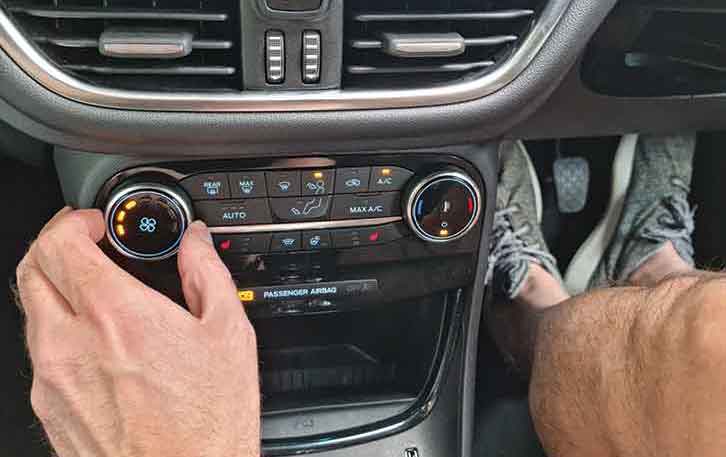
Even so, once we’re on the M3, the Puma is largely happy to hold 60mph in sixth gear, only needing to drop to fifth when caught behind slower traffic.
It’s not underpowered for the kind of lightweight tourer that falls within the 1100kg maximum towing figure, you just need to be patient building speed.
Care is needed if the roads are damp. As I continue around the economy route, it’s possible to spin the wheels where overnight rain has lingered on the road surface. I wouldn’t look forward to making hill starts if the road was greasy.
The Puma is extremely stable, though. There’s hardly a twitch, whether towing on the motorway or a country road.
Back at the storage facility, the Puma is easy to manoeuvre. The clutch is light and precise, and it helps that the Bailey is relatively narrow at 7’ 4”, so the caravan towing mirrors give a clear view down the sides.
Thursday: checking the Ford Puma’s boot capacity
No towing today, but I do need to take a bicycle for a service. The local shop wasn’t able to fit me in, so I’m driving over to the next town rather than cycling.
The Puma isn’t a huge car, but my bike fits with the rear seats folded. There aren’t any remote releases by the tailgate, but it’s no chore to undo the catches on the top of the back seats. It would be a bit easier to squeeze the bike in if I lowered the saddle or took out the front wheel, but even though it’s rather a tight fit, it can still be shoehorned into the car.
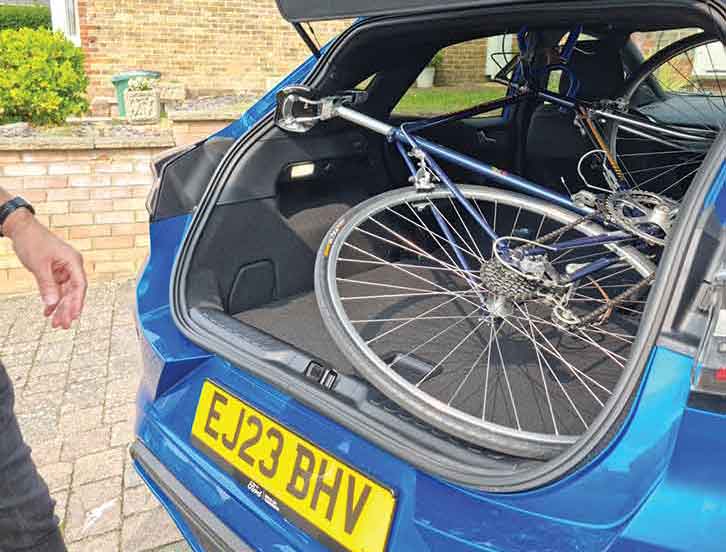
With the bike dropped off, I take a good look in the boot. With the variable height floor on the higher level, there’s only a slight load lip to lift items over. With the floor on the lower setting, the lip is greater, but the space is impressive. With a 456-litre boot, the Puma has more room for luggage than most small tow cars.
It also has what Ford calls the ‘Modubox’ – a large space under the boot floor that’s ideal for storing muddy footwear at the end of a long country walk. I don’t use it during my week with the vehicle, but I can imagine that it would often come in very handy if the Puma were my car.
Friday: day-to-day driving with the Ford Puma
A day spent sitting at my desk, although my daughter wants a lift to a sleepover this evening. I’ve volunteered to taxi a couple of her friends, too. Rear-seat space is quite tight for the teenager sitting behind me. There’s certainly not as much room in the back as you’d find in a Volkswagen T-Roc.
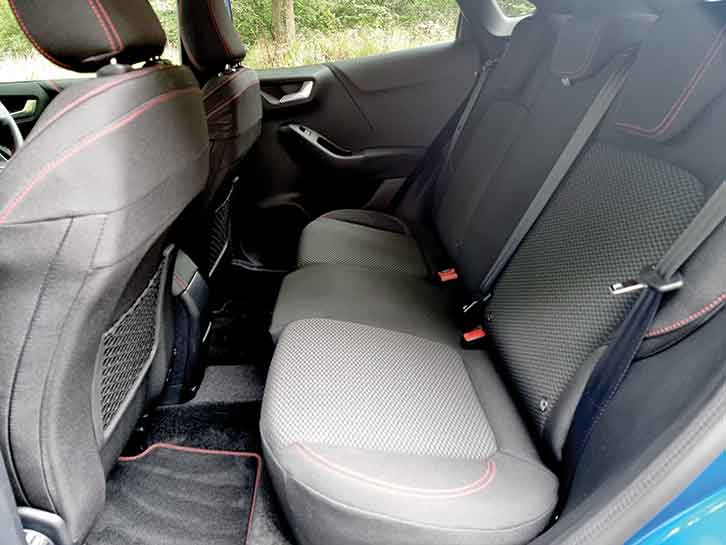
There are no air vents between the front seats or in the door pillars to keep the girls cool during the journey, and there’s inevitably some moaning about the lack of USB ports in the back when they realise that they need to charge up a flat phone.
Monday: towing on a motorway with the Ford Puma 1.0 mHEV 155PS ST-Line
A motorway drive to attend a business meeting shows the Puma to be capable of around 48mpg on a long run, helped by mild-hybrid technology. This uses a starter-generator to take the strain away from the engine and improve the car’s economy, although the Puma never runs on electricity alone.
That’s just a little short of the official combined economy of 50.4-51.4mpg, but not much. Around our towing route, the Puma achieved 28.9mpg while towing the Bailey D4-4.
Verdict on the Ford Puma 1.0 mHEV 155PS ST-Line
It’s been a couple of years since we towed with the Puma, and this week has been a reminder that the little Ford tows well. However, it is only suitable for very lightweight tourers.
Technical spec of the Ford Puma
- Model tested: 1.0 mHEV 155PS ST-Line
- Price: £26,640
- Kerbweight: 1280kg
- 85% of kerbweight: 1088kg
- Noseweight: 75kg
- Towing limit: 1100kg
Alternatives to the Ford Puma
There’s a lot to like about the Genesis GV80, even if it’s rather let down by its thirst. Alternatively, the Audi A6 Avant comes with excellent performance and also provides brilliant economy if you’re able to recharge when you’re at home. Then there’s the Nissan X-Trail e-4orce Tekna, which is well-built and thoughtfully designed.
If you’ve enjoyed reading this article, why not get the latest news, reviews and features delivered direct to your door or inbox every month. Take advantage of our brilliant Practical Caravan magazine SUBSCRIBERS’ OFFER and SIGN UP TO OUR NEWSLETTER for regular weekly updates on all things caravan related.
Technical Specifications
| Kerbweight | 1280 kg |
| 85% KW | 1088 kg |
| Maximum Towing Limit | 1100 kg |
